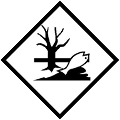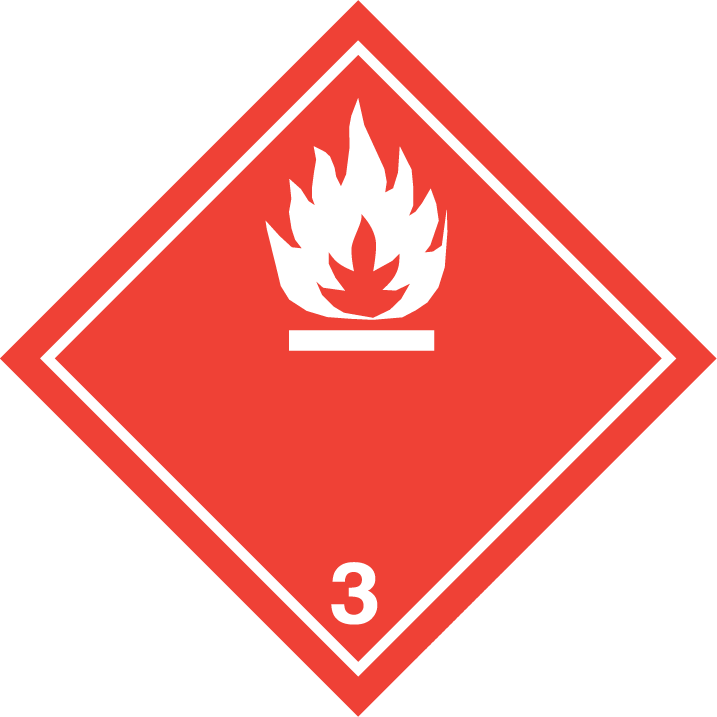SAFETY DATA SHEET
Aqua Hold Pap Pen
1. IDENTIFICATION
Product Identifiers
Product Name:
Aqua Hold Pap Pen
Other Names:
Liquid blocker, Super PAP pen, Regular, Mini
Product Number(s):
71311; ID310
CAS Number:
142-82-5
Recommended use of the chemical and restriction on use
Laboratory use
Company Details
ProSciTech Pty Ltd
11 Carlton Street
KIRWAN QLD 4817
Australia(07) 4773 9444www.proscitech.com
11 Carlton Street
KIRWAN QLD 4817
Australia(07) 4773 9444www.proscitech.com
Emergency Contact Details
ProSciTech Pty Ltd
11 Carlton Street
KIRWAN QLD 4817
Australia(07) 4773 9444www.proscitech.com
11 Carlton Street
KIRWAN QLD 4817
Australia(07) 4773 9444www.proscitech.com
2. HAZARDS IDENTIFICATION
Classification of the substance or mixture
* This pen contains industrial chemicals, avoid skin contact.
Label Elements



Signal Words
Danger
Hazard Statement(s)
Highly flammable liquid and vapour.
Causes skin irritation.
May cause drowsiness or dizziness.
May be fatal if swallowed and enters airways.
Causes skin irritation.
May cause drowsiness or dizziness.
May be fatal if swallowed and enters airways.
Precautionary Statement(s)
Keep away from heat/sparks/open flames/hot surfaces. - No smoking.
Ground/bond container and receiving equipment.
Use explosion-proof electrical/ventilating/lighting/equipment.
Use only non-sparking tools.
Take precautionary measures against static discharge.
Avoid breathing dust/fume/gas/mist/vapours/spray
Wash thoroughly after handling.
Use only outdoors or in a well-ventilated area.
Wear protective gloves/protective clothing/eye protection/face protection.
If swallowed: Immediately call a poison center/doctor.
Specific treatment (see on this label).
Do NOT induce vomiting.
If on skin (or hair): Take off immediately all contaminated clothing. Rinse skin with water/shower.
IF INHALED: Remove person to fresh air and keep comfortable for breathing.
Call a poison center/doctor if you feel unwell.
Take off contaminated clothing and wash it before reuse.
If skin irritation occurs: Get medical advice/attention.
In case of fire: Use for extinction: CO₂, powder or water spray.
Store in a well-ventilated place. Keep container tightly closed.
Store in a well-ventilated place. Keep cool.
Store locked up.
Dispose of contents/container in accordance with local/regional/national/international regulations
Ground/bond container and receiving equipment.
Use explosion-proof electrical/ventilating/lighting/equipment.
Use only non-sparking tools.
Take precautionary measures against static discharge.
Avoid breathing dust/fume/gas/mist/vapours/spray
Wash thoroughly after handling.
Use only outdoors or in a well-ventilated area.
Wear protective gloves/protective clothing/eye protection/face protection.
If swallowed: Immediately call a poison center/doctor.
Specific treatment (see on this label).
Do NOT induce vomiting.
If on skin (or hair): Take off immediately all contaminated clothing. Rinse skin with water/shower.
IF INHALED: Remove person to fresh air and keep comfortable for breathing.
Call a poison center/doctor if you feel unwell.
Take off contaminated clothing and wash it before reuse.
If skin irritation occurs: Get medical advice/attention.
In case of fire: Use for extinction: CO₂, powder or water spray.
Store in a well-ventilated place. Keep container tightly closed.
Store in a well-ventilated place. Keep cool.
Store locked up.
Dispose of contents/container in accordance with local/regional/national/international regulations
Primary route(s) of entry
Not available.
Human Health
Inhalation:
Not available.
Ingestion:
Not available.
Eyes:
Not available.
Skin:
Not available.
Environment
Not available.
3. COMPOSITION/INFORMATION ON INGREDIENTS
Name
CAS No.
Content (w/w)
Classification
Hheptane
142-82-5
Not Available
4. FIRST AID MEASURES
Ingestion
If symptoms persist consult doctor
Inhalation
In case of unconsciousness place patient stably in side position for transportation.
Skin Contact
Immediately wash with water and soap and rinse thoroughly.
Eye Contact
Rinse opened eye for several minutes under running water
Other Information
Antidote = A solution of salt.
5. FIREFIGHTING MEASURES
Suitable extinguishing equipment
CO₂, extinguishing powder or water spray. Fight larger fires with water spray or alcohol
resistant foam.
resistant foam.
HAZCHEM
No further relevant information available
Special protective equipment and precautions for fire fighters
6. ACCIDENTAL RELEASE MEASURES
Personal precautions, protective equipment and emergency procedures
Wear protective equipment. Keep unprotected persons away.
Environmental precautions
Do not allow product to reach sewage system or any water course.
Prevent seepage into sewage system, workpits and cellars.
Inform respective authorities in case of seepage into water course or sewage system.
Dilute with plenty of water
Prevent seepage into sewage system, workpits and cellars.
Inform respective authorities in case of seepage into water course or sewage system.
Dilute with plenty of water
Methods and materials for containment and clean up
Absorb with liquid-binding material (sand, diatomite, acid binders, universal binders, sawdust).
Dispose contaminated material as waste according to item 13.
Ensure adequate ventilation
Dispose contaminated material as waste according to item 13.
Ensure adequate ventilation
7. HANDLING AND STORAGE
Precautions for safe handling
No special precautions are necessary if used correctly
Conditions for safe storage
Store in a cool location
Keep receptacle tightly sealed
Protect against electrostatic charges
8. EXPOSURE CONTROLS/PERSONAL PROTECTION
Exposure Standards
Material
TWA ppm
TWA mg/m3
STEL ppm
STEL mg/m3
Heptane
500 ppm
2000 mg/m³
500 ppm
2050 mg/m³
Engineering controls
Keep away from foodstuffs, beverages and feed.
Immediately remove all soiled and contaminated clothing.
Wash hands before breaks and at the end of work.
Avoid contact with the skin.
Avoid contact with the eyes and skin
Immediately remove all soiled and contaminated clothing.
Wash hands before breaks and at the end of work.
Avoid contact with the skin.
Avoid contact with the eyes and skin
Personal protective equipment
Eye and face protection
Not required
Skin protection
Not required
Body protection
Not required
Respiratory protection
Not required
9. PHYSICAL AND CHEMICAL PROPERTIES
General information
Appearance
Red liquid
Odour
Odorless
pH
Not determined
Vapour Pressure
at 20 °C (68 °F): 48 hPa (36 mm Hg)
Density
at 20 °C (68 °F): 0.68 g/cm³ (5.6746 lbs/gal)
Boiling Point
98 °C (208.4 °F)
Melting Point
-90.5 °C (-130.9 °F)
Solubility
Miscibility with Water at 20 °C (68 °F) = 0.05 g/l
Specific Gravity of Density
Not determined
Flash Point
-4 °C (24.8 °F)
Flammable (Explosive) Limits
Not flammable - Product is not explosive. However, formation of explosive air/vapour mixtures are possible
Explosion limits:
Lower: 1.1 Vol %
Upper: 6.7 Vol %
Explosion limits:
Lower: 1.1 Vol %
Upper: 6.7 Vol %
Ignition Temperature
Not determined
Formula
Viscosity:
Dynamic at 20 °C (68 °F): 0.4 mPas
Kinematic: Not determined.
Organic solvents: 100.0 %
VOC content: 100.00 %
680.0 g/l / 5.67 lb/gl
Dynamic at 20 °C (68 °F): 0.4 mPas
Kinematic: Not determined.
Organic solvents: 100.0 %
VOC content: 100.00 %
680.0 g/l / 5.67 lb/gl
10. STABILITY AND REACTIVITY
Reactivity
No further relevant information available
Chemical stability
Stable under normal conditions
Possibility of hazardous reactions
No dangerous reactions known
Conditions to avoid
No further relevant information available
Incompatible materials
No further relevant information available
11. TOXICOLOGICAL INFORMATION
Acute effects
No further relevant information available
Eye contact
No irritating effect
Skin contact
Irritant to skin and mucous membranes
Ingestion
No sensitizing effects known
Inhalation
No sensitizing effects known
Toxicity and irritation
No further relevant information available
12. ECOLOGICAL INFORMATION
Ecotoxicity
Poisonous for fish and plankton in water bodies.
Very toxic for aquatic organisms
Very toxic for aquatic organisms
Persistence and degradability
No further relevant information available
Bioaccumulative potential
No further relevant information available
Other adverse effects
No further relevant information available
13. DISPOSAL CONSIDERATIONS
General information
Must not be disposed of together with household garbage. Do not allow product to reach sewage system.
· Recommendation: Disposal must be made according to official regulations.
· Recommended cleansing agent: Water, if necessary with cleansing agents.
· Recommendation: Disposal must be made according to official regulations.
· Recommended cleansing agent: Water, if necessary with cleansing agents.
14. TRANSPORT INFORMATION
ADG label required


HAZCHEM
No further relevant information available
UN Number
UN1206
Proper shipping name
H e p t a n e s , ENVIRONMENTALLY HAZARDOUS
Transport hazard class
3
Packing group
II
Environmental hazard
Fish and tree)
Special precautions for users
Warning: Flammable liquids
Additional information
Quantity limitations On passenger aircraft/rail: 5 L
On cargo aircraft only: 60 L
Excepted quantities (EQ) Code: E2
Maximum net quantity per inner packaging: 30 mL
Maximum net quantity per outer packaging: 500 mL
· Limited quantities (LQ) 1L
· Excepted quantities (EQ) Code: E2
Maximum net quantity per inner packaging: 30 mL
Maximum net quantity per outer packaging: 500 mL
On cargo aircraft only: 60 L
Excepted quantities (EQ) Code: E2
Maximum net quantity per inner packaging: 30 mL
Maximum net quantity per outer packaging: 500 mL
· Limited quantities (LQ) 1L
· Excepted quantities (EQ) Code: E2
Maximum net quantity per inner packaging: 30 mL
Maximum net quantity per outer packaging: 500 mL
15. REGULATORY INFORMATION
Poisons Schedule Number
No further relevant information available
Other Information
No further relevant information available
16. OTHER INFORMATION
SDS preparation date
27 November 2024
Comments
This information is based on our present knowledge. However, this shall not constitute a guarantee for any specific product features and shall not establish a legally valid contractual relationship.This Safety Data Sheet (SDS) has been prepared in compliance with the Preparation of Safety Data Sheets for Hazardous Chemicals Code of Practice February 2016. It is the user's responsibility to determine the suitability of this information for adoption of necessary safety precautions. The information published in this SDS has been compiled from the publications listed in Section 16: to the best of our ability and knowledge these publications are considered accurate. We reserve the right to revise Safety Data Sheets as new information becomes available. Copies may be made for non-profit use.
This Safety Data Sheet (SDS) has been prepared in compliance with the Preparation of Safety Data Sheets for Hazardous Chemicals Code of Practice February 2016. It is the user's responsibility to determine the suitability of this information for adoption of necessary safety precautions. The information published in this SDS has been compiled from the publications listed in Section 16: to the best of our ability and knowledge these publications are considered accurate. We reserve the right to revise Safety Data Sheets as new information becomes available. Copies may be made for non-profit use.